|
|
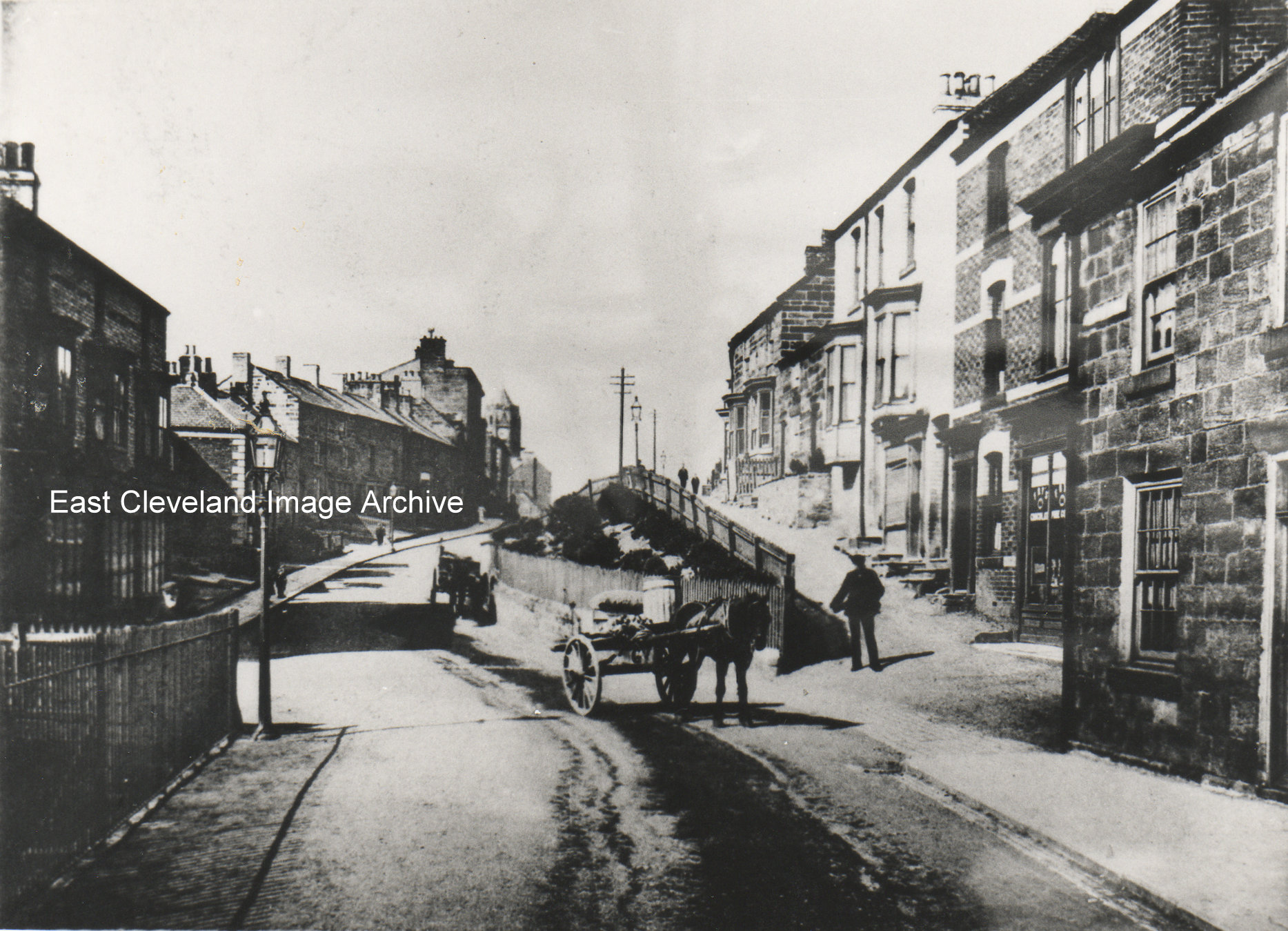
A busy day on Arlington Street even though it looks as if snow is on the ground; there are two horses and carts. The shop in the corner was owned by Tommy Wren; a dark musty kind of shop that sold everything or so it seemed when I was young. A lovely gas light on the left hand side and no I don’t remember them.
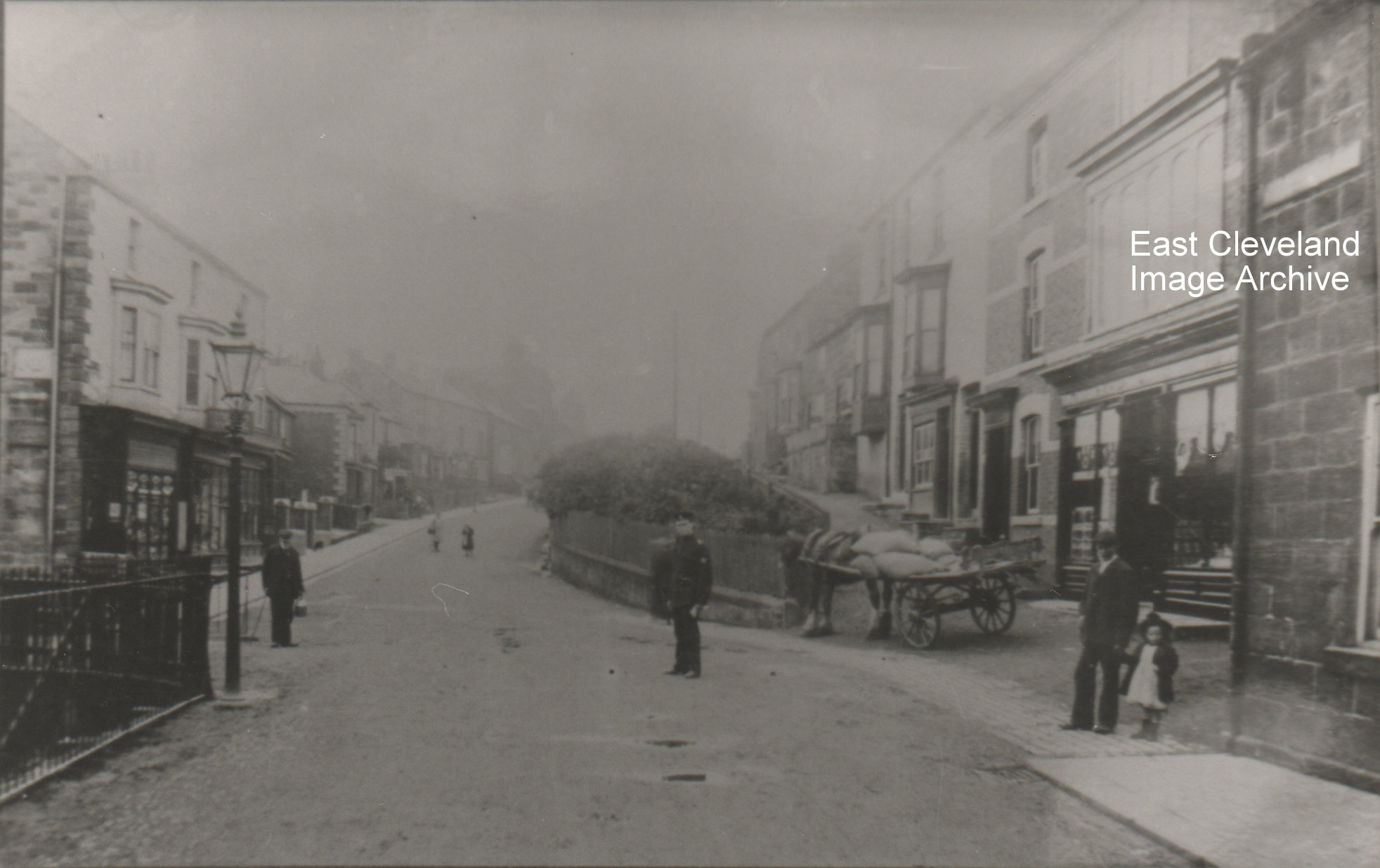
Don’t think it’s fog or a fire; it’s a fault in the photograph, but once again everyone stops for the photographer. We do have a man in uniform, a policeman, don’t think he will be directing traffic as there is only one horse and cart in the scene. The road looks pretty dire with the pools of water, maybe it hasn’t been tarmac-ed yet. What do you think?
The end of Loftus High Street looking towards the Market Place, about 1920. The shops were: a small general dealers, Mr Robinson’s bike and electrical shop, then came Finlay’s sweet shop. Can we date it by the pram? The gap in the wall on the right hand side was for a horse trough that was fed by a natural spring. Eric Johnson says ”The first shop has the name S. Jackson on the sign. Kelly’s Directory of the North Riding for 1905, lists: ’Jackson, Sarah (Mrs), shopkeeper, 43 High Street Loftus”. Jean Wiggins tells us od this image: “Granny Jackson is standing outside Jackson’s grocer’s on the corner of Dam Street. The middle shop is ‘Sappy’ Watson’s barbers and the next is Finlay’s provisions.”
Many thanks to Jean Wiggins for the update.
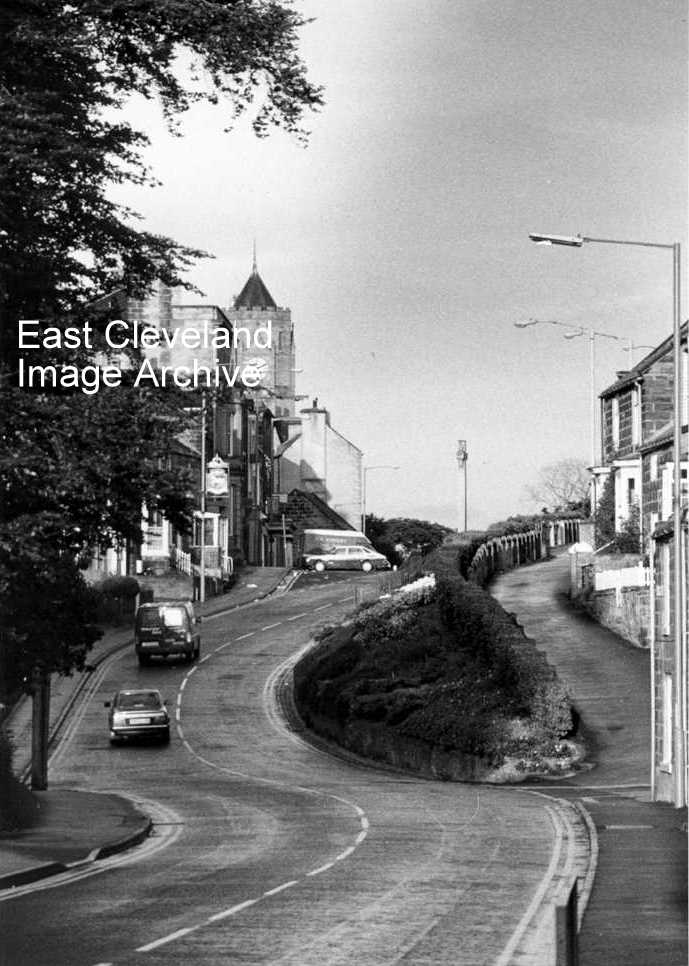
A busy day in Loftus as the two vehicles go towards the Market Place? Known to be dating from 1986 as Martin Richardson advised the Archive: “I can remember the Saab parking in the Market Place at that time!”
Thanks to Martyn Richardson for that update and dating of the image.
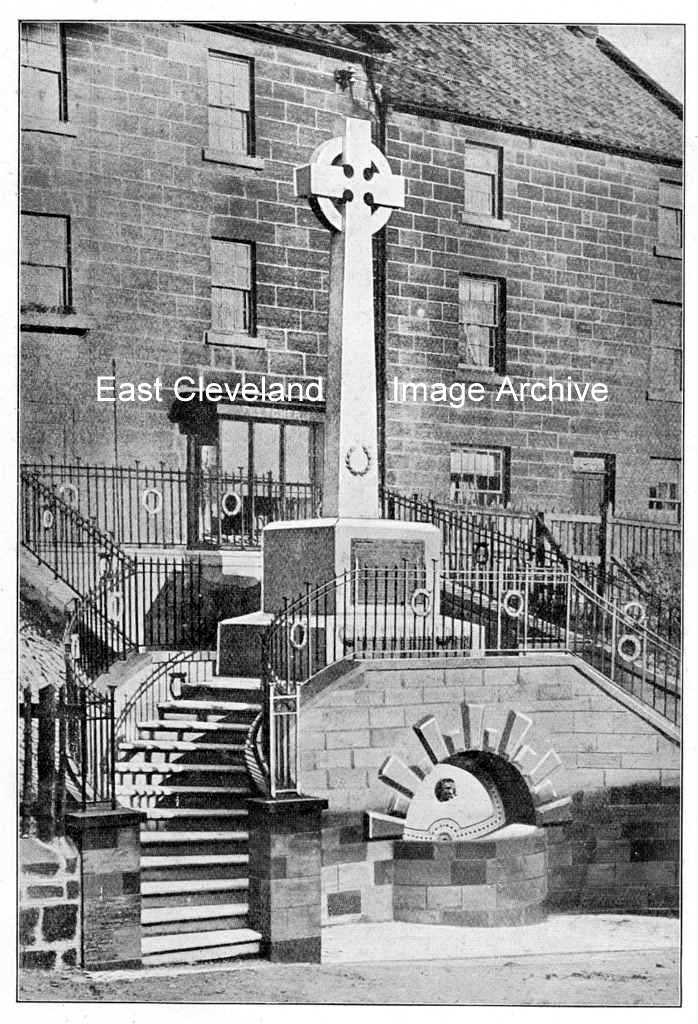
This image was taken from the Order of Service produced for the dedication ceremony of Loftus War Memorial. The War Memorial was unveiled at 2.00pm on 11th November 1922, (one year after the end of registration of deaths due to the War or its effects; it was designed by B. J. Wormleighton and erected by Charles Hebditch (Loftus building company). Built of Cornish granite, it is a Celtic cross and stands on land donated by Lord Zetland.
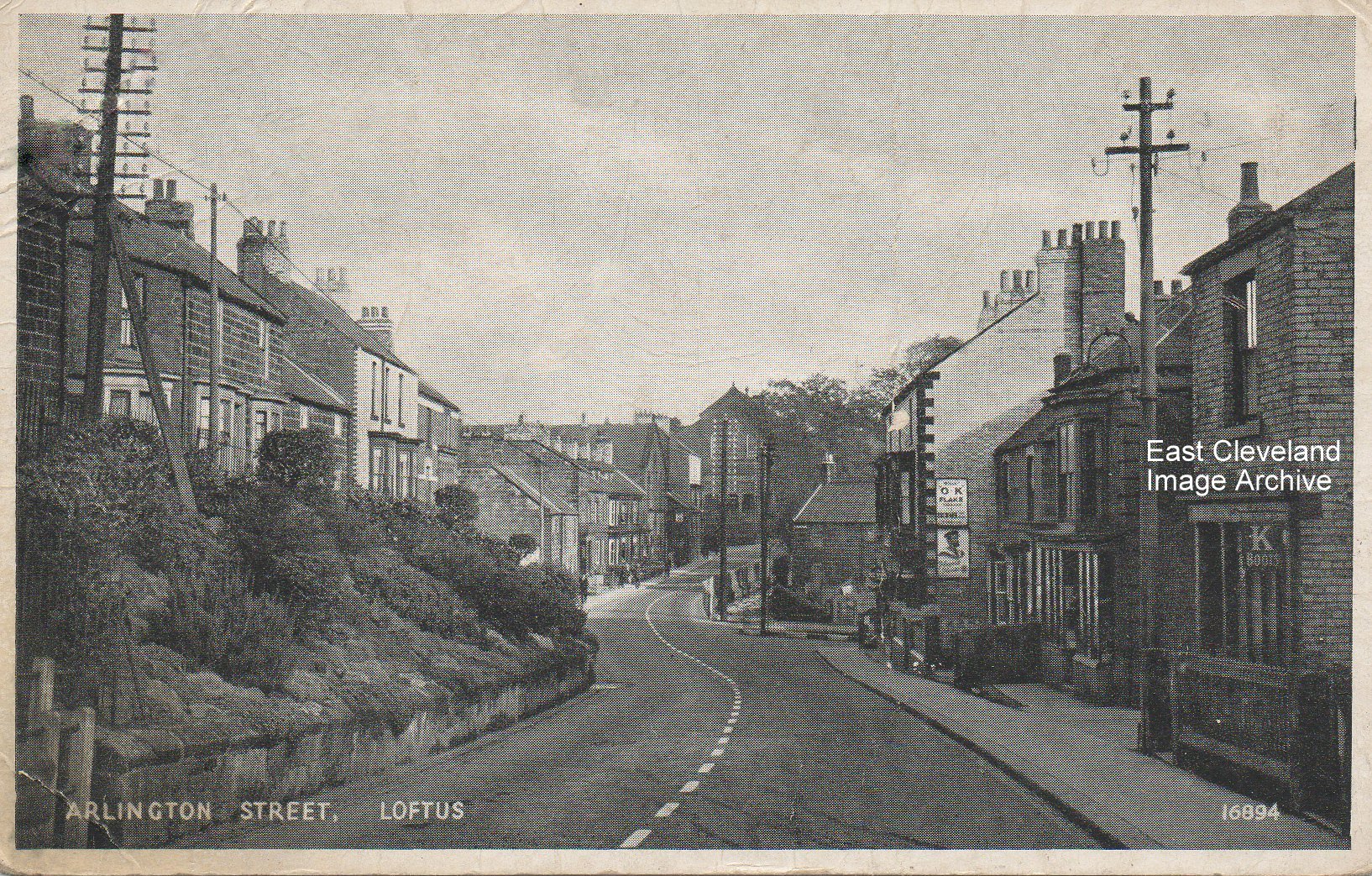
Must be the most photographed street in Loftus; the gardens on the left and the chapel on the hill made it a lovely picture. In this one in the right foreground is Tim Lines boot and shoe repair shop; what was the shop next to it, was it his shoe shop? Please tell. M. Flegg has advised: “The shop down from the shoe sales shop was where the shoe repairs were done by ‘uncle Tim’”.
Many thanks to M. Flegg for the update.
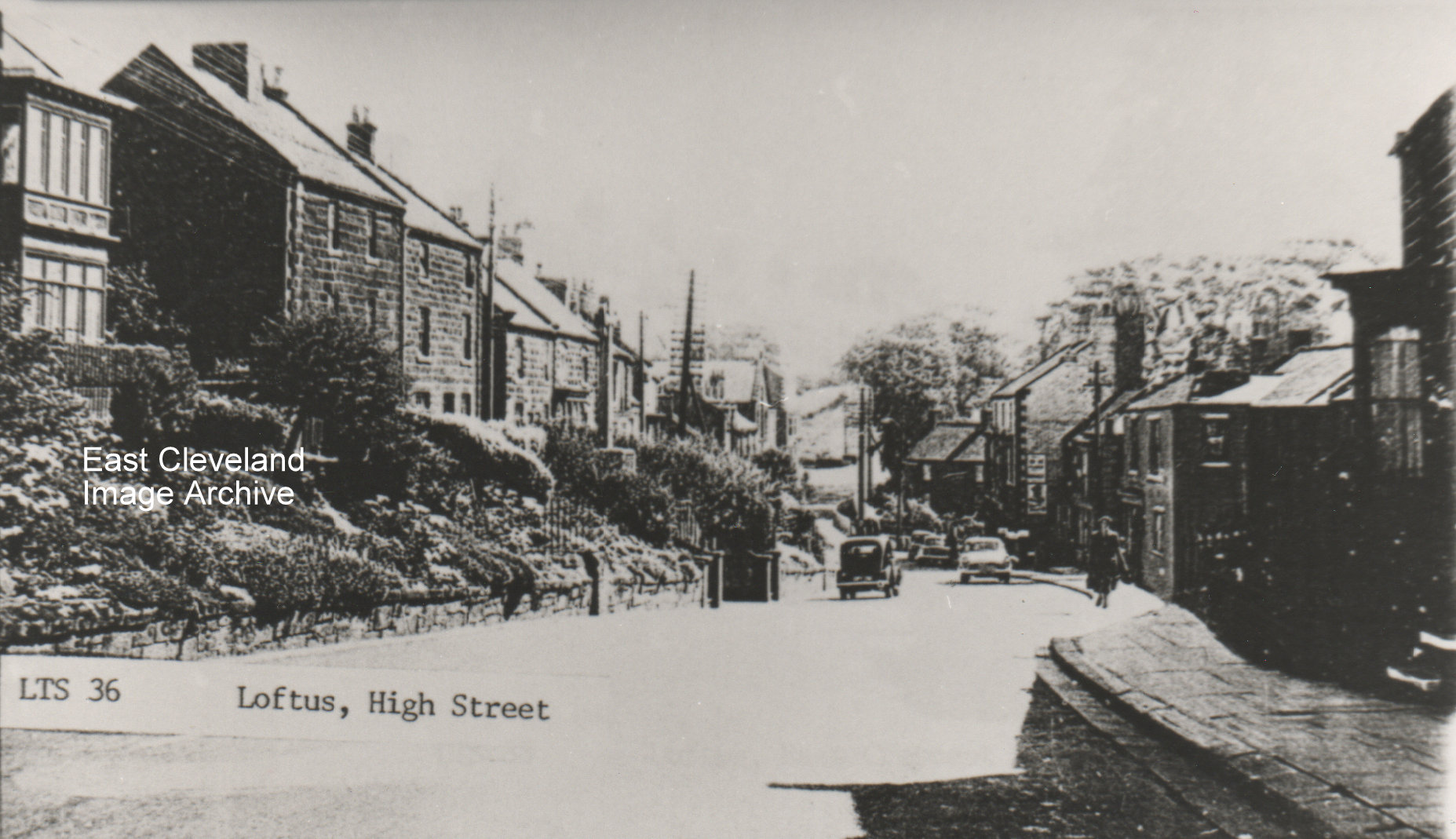
Loftus again looking east from the Market place; doesn’t look very busy. The Wesleyan chapel has gone and the car would seem to indicate the 1950’s. A positive dating would be welcome.
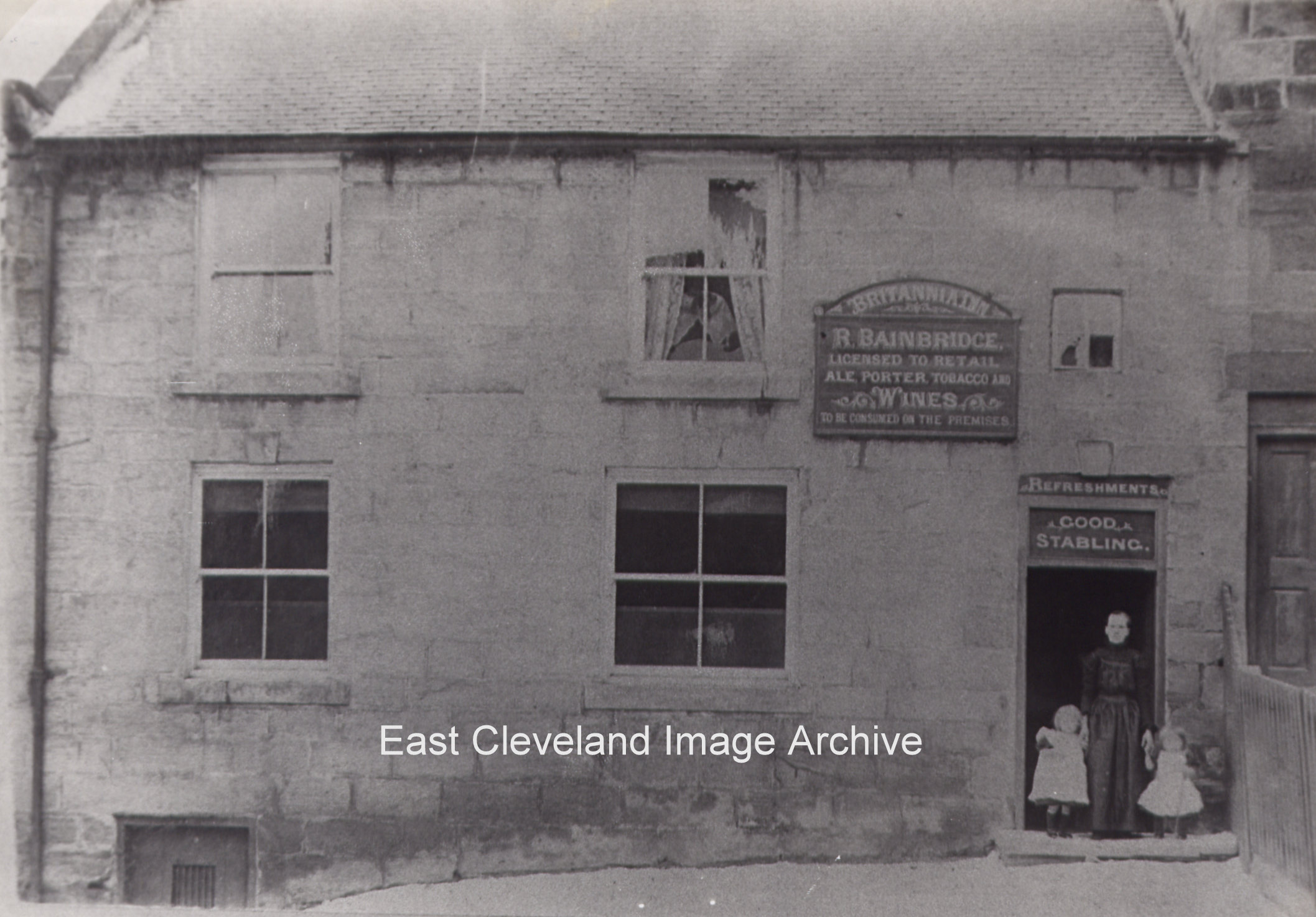
Not the Britannia Inn as we see it today and I don’t remember it being like this. Possibly dates as follows- 1891 Census list: Britannia Inn, 65 High Street, Loftus. Robert Bainbridge (Head) age 44, also described as Engine Driver; wife Mary age 39, daughter Ada age 18, son Timothy age 16 and Ada Robson age 14 general servant. According to Kelly’s Directory of 1905: Robert Bainbridge is listed as Beer Retailer, High Street, Loftus.
Image courtesy of the Pem Holliday Collection and thanks to Eric Johnson for additional information.
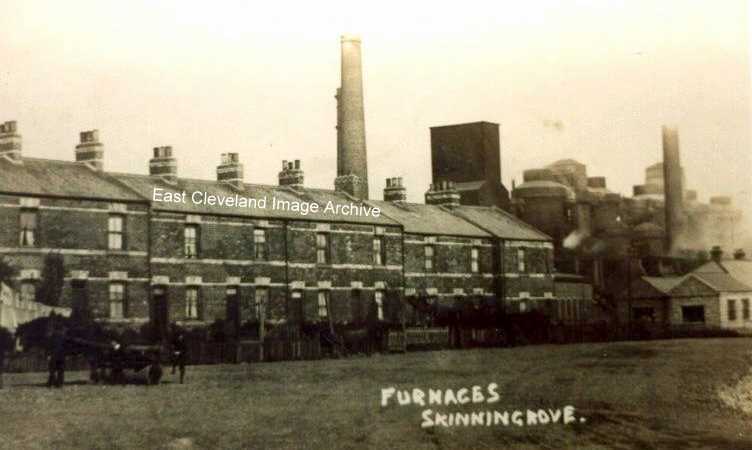
No need to wonder how this row and the one next to it got their name seeing the close proximity of the furnaces. We have the following reminiscences of this terrace; John Winspear tells us: ”I remember them well. I used to walk past these houses every working day from September 1955 till January 1964, on my way to work in the the fitting shop which was situated on the land immediately behind and to left of the two rows of houses. I also delivered sunday papers there for five years. A wonderful group of people who had little in the way of materialistic value but were generous to a fault. I recall the names of only a few the Garbutts, the Parrishs, the Summers; I went to school with sons and daughters of them all. Doris Summers worked in the drawing office as a tracer, her dad Charlie was the trainer for the works junior football team. Salt of the earth”. Derick Pearson also says: ” I also remember the McGuires, the Swales, the Whartons, the Smithies, the Pearsons and others”. Sue Doig (nee Kennedy) tells us: “In 1911, my grandfather, Patrick Kennedy who worked in Skinningrove Main, and his wife Mary and son John lived at 3 Back Row, Furnace Cottages with the owner, Mark Ford and his family”.
Thanks to John Winspear and Derick Pearson for these memories; also to Sue Doig for the update.
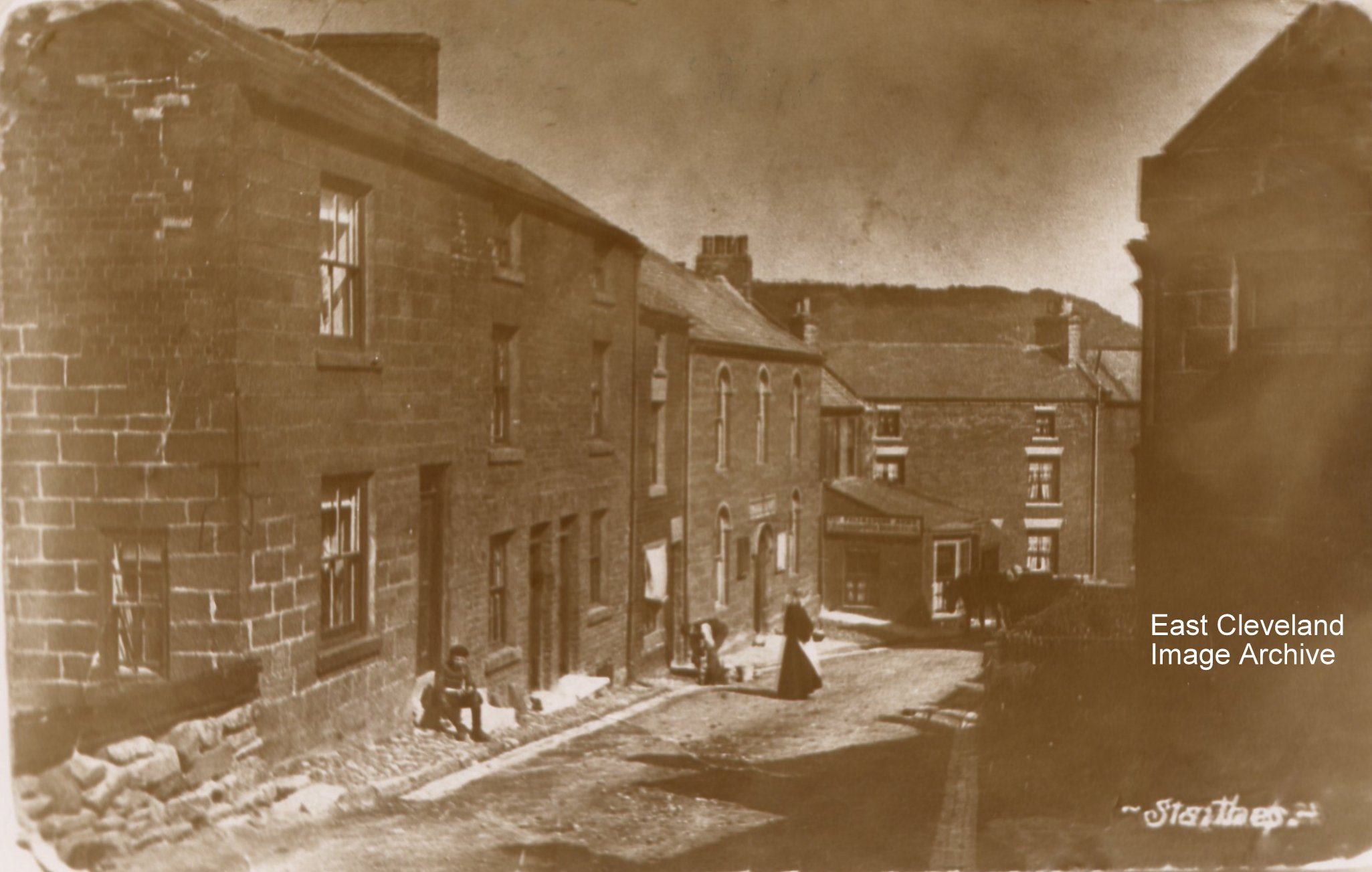
A lovely shot of old Staithes, from a postcard dating from the early 1900’s; another place that never changes.
Image courtesy of the Pem Holliday Collection.
|
|


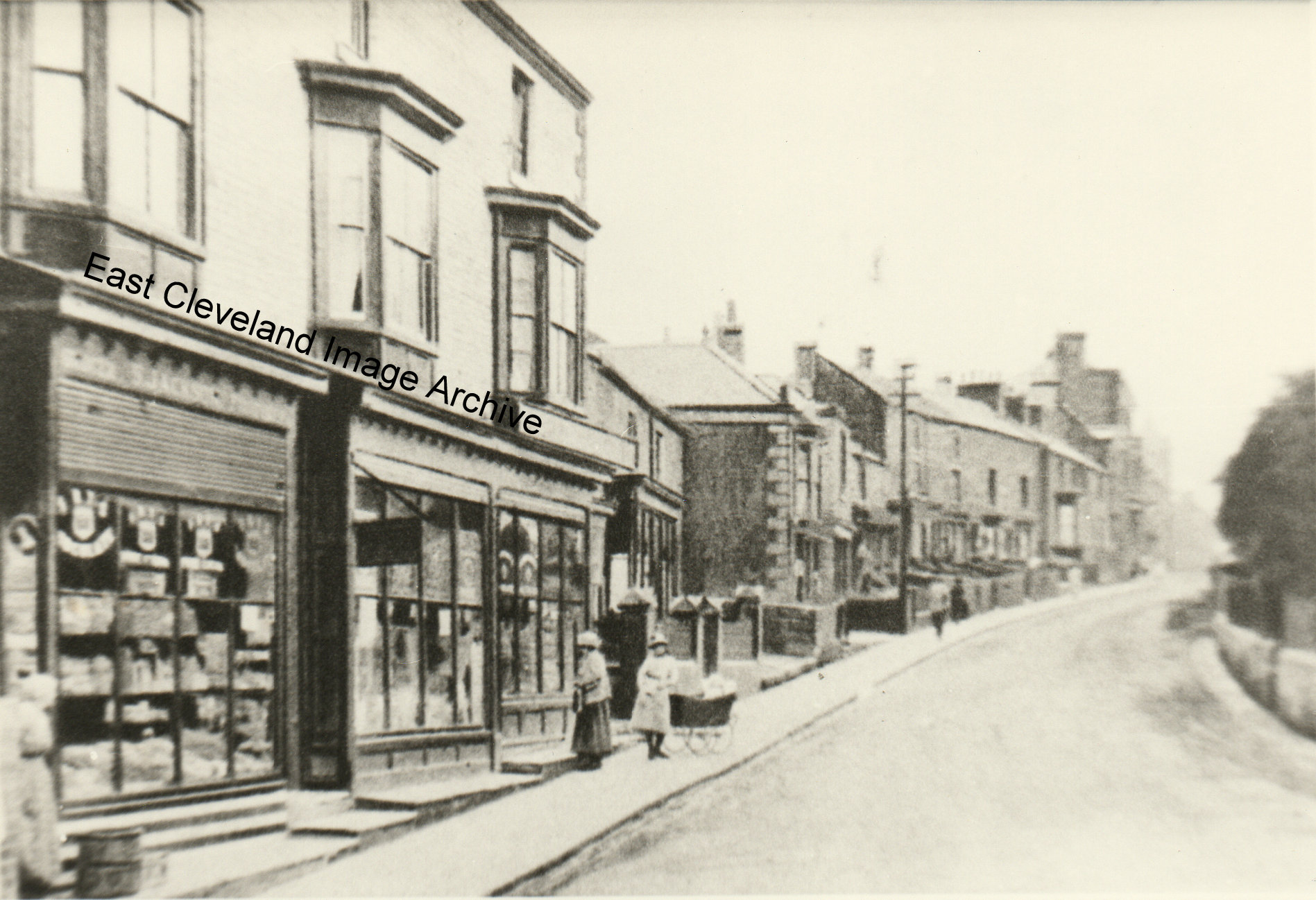







Recent Comments